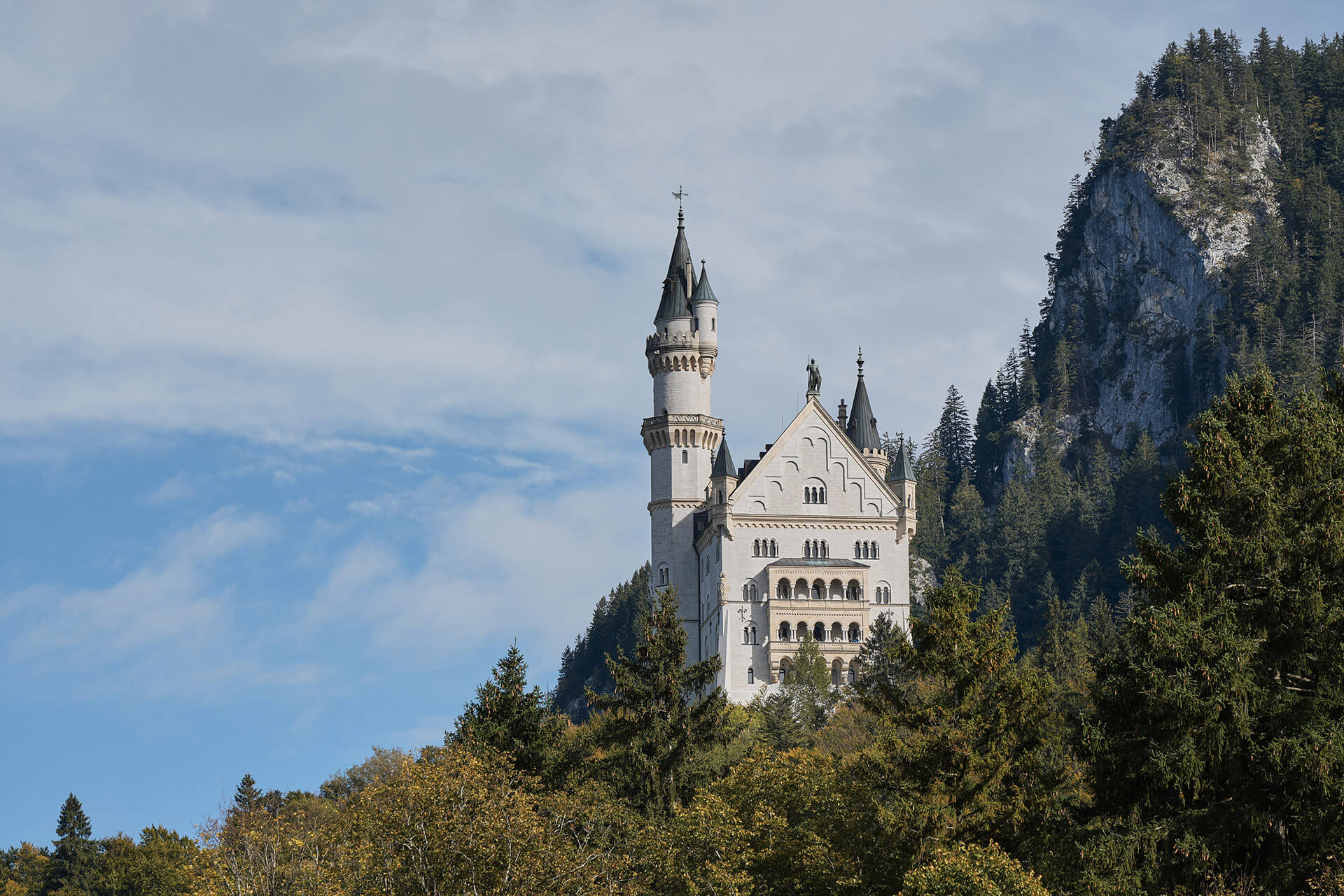The Empty Throne
Entering the Throne Hall of Neuschwanstein Castle takes your breath away. Light pours through tall arched windows, your gaze sweeps over gilded columns, radiant blue domes, and a mosaic floor crafted by hand from more than 1.5 million tiny natural stone fragments. Animals, plants, and stars form a symbolic image of creation – and at the center, there is nothing. No throne. Just emptiness.
It is precisely this emptiness that lends the Throne Hall its mysterious aura. King Ludwig II, Bavaria’s "Fairy Tale King," designed the space in the style of a Byzantine church – a spiritual place that doesn’t display power but sanctifies it. The throne, symbol of divine legitimacy, was fully planned, but never built. Ludwig died in 1886 before the castle could be completed. Thus, the heart of his dream castle remained unfinished – and therein lies its magic.
The Throne Hall was never intended for audiences or royal representation. It was the expression of a deeply held idea: the king as mediator between heaven and earth. The apse, which marks the place of the throne, resembles the sanctuary of a church. Above it rises a gilded baldachin, reminiscent of a Byzantine royal crown. Everything points to the ideal of a kingship "by the grace of God" – far removed from the reality of a constitutional monarchy.
Ludwig II was a dreamer – a king who didn’t want to rule, but to create. His Throne Hall is an architectural confession of faith, a fusion of myth, religion, and personal longing. And as visitors today walk through the hall in reverent silence, there is a quiet power in the absence of the throne. It speaks of the fragility of grand dreams – and how powerfully they can live on, even when they never fully came true.




